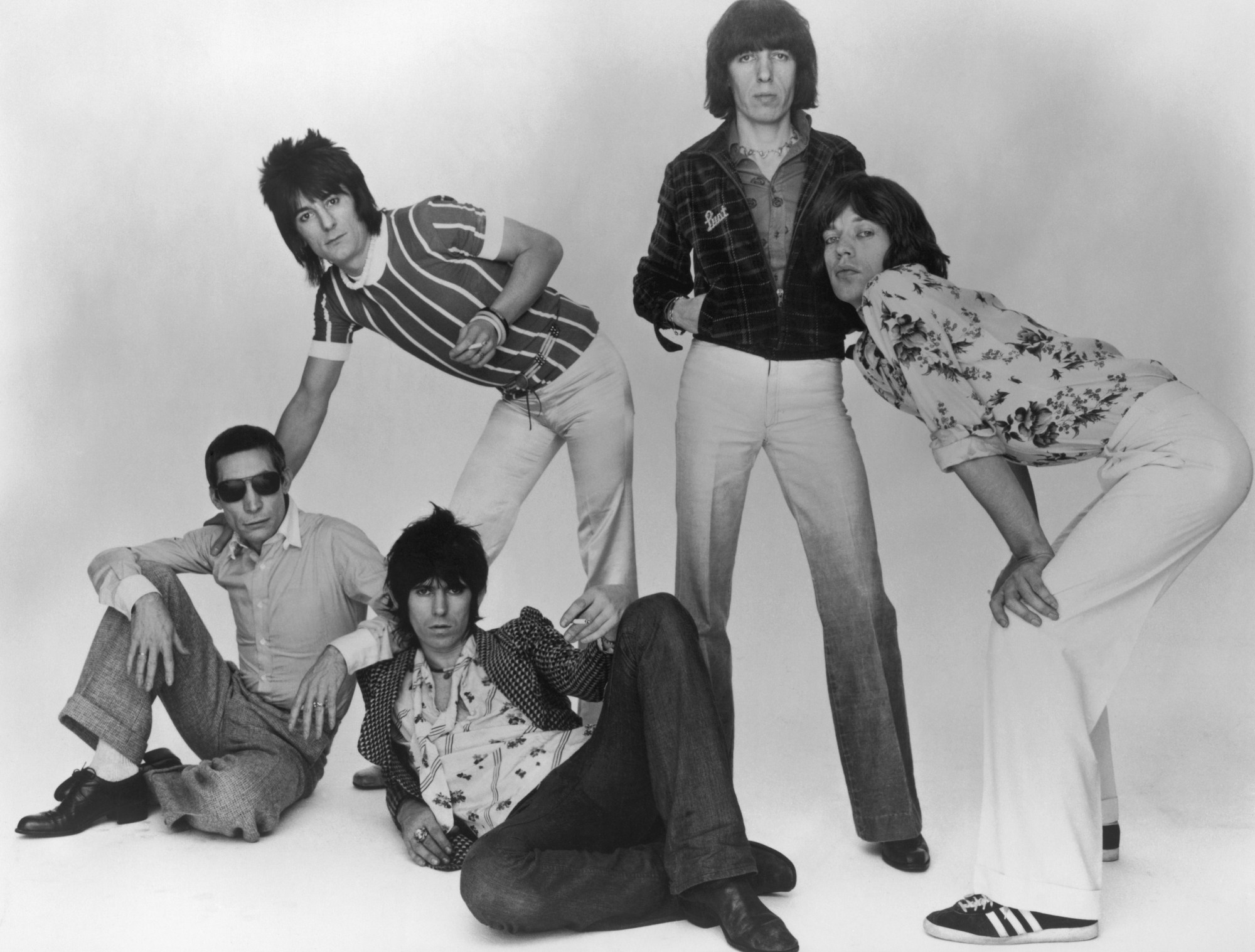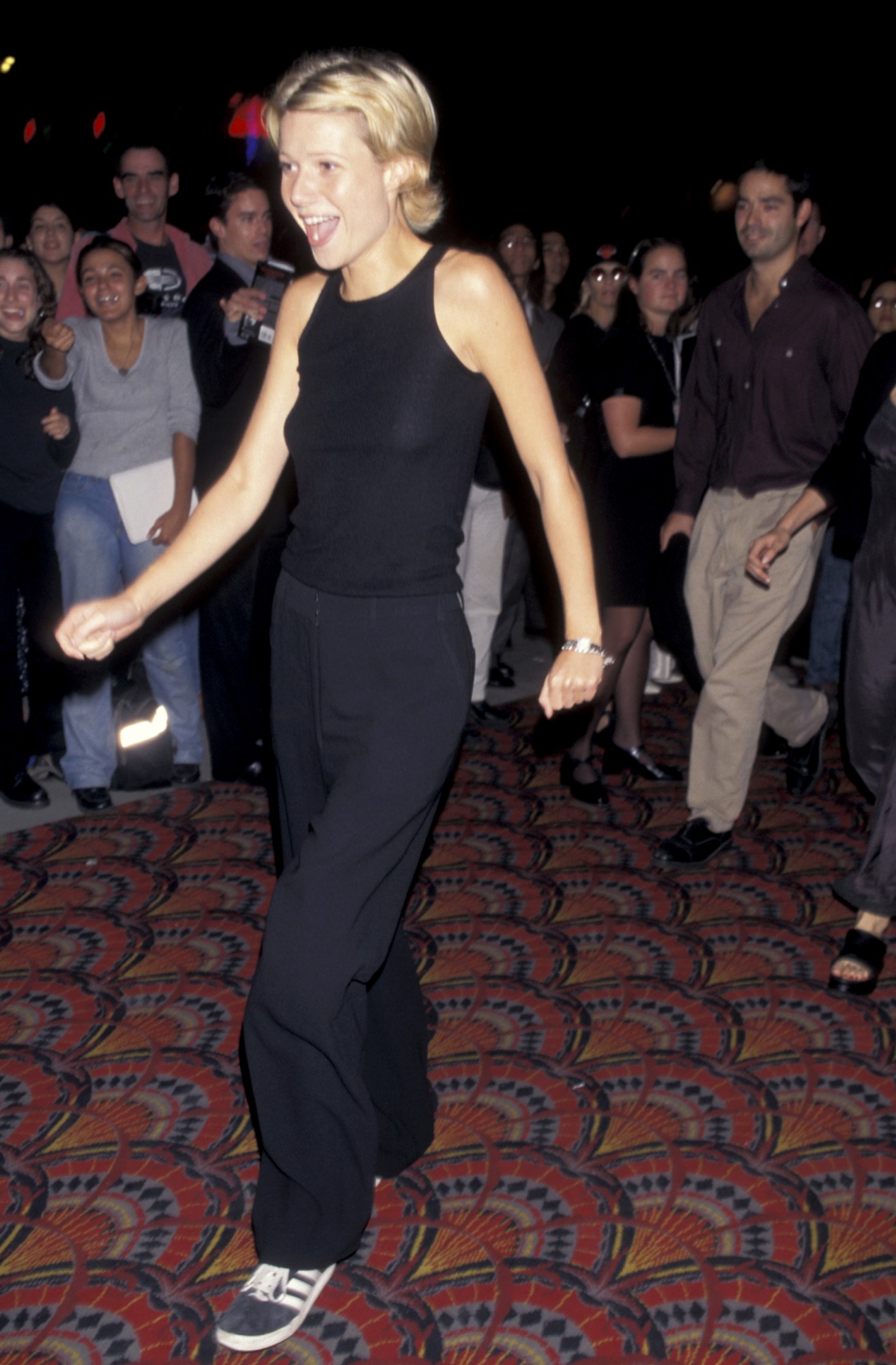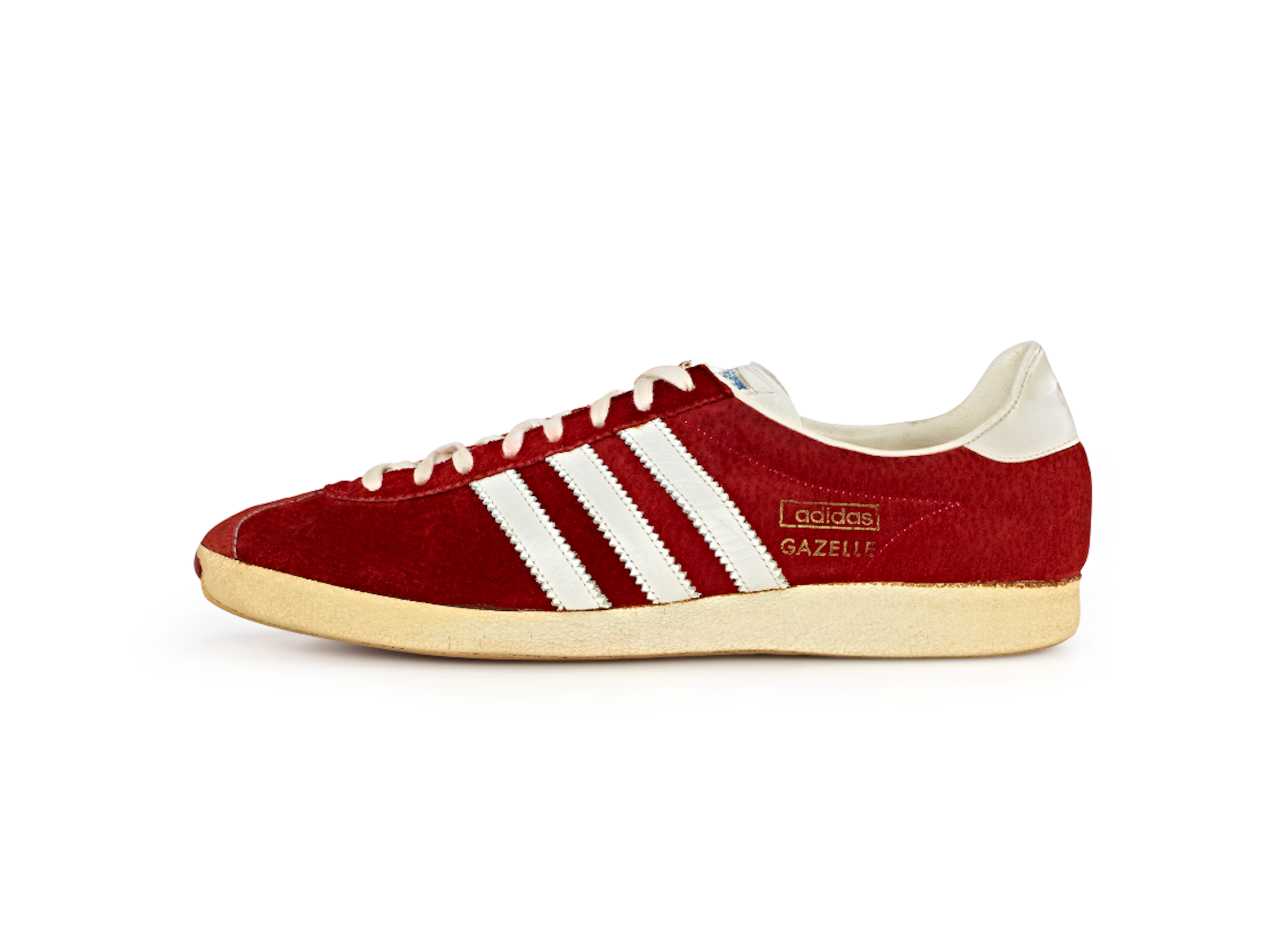In 1966, a star was born. Well, actually, many stars were born: Janet Jackson, Cindy Crawford, Halle Berry, to name a few. But the star in question here is the Adidas Originals Gazelle, a beloved trainer, a timeless addition to the canon, and — perhaps lesser-known — the first Adidas shoe made from suede. Some say it changed the course of history for Adidas and sneakers at large; its white stripes across dyed suede, a first in shoe making, ascending multicoloured trainers to a more exciting realm than the drab leather alternatives that came before it (though initially, the Gazelle came in just two colours, red and blue, delineated for the types of training they best suited). But 56 years after it first hit the market (and 49 years after a lookalike shoe, the Jaguar, tried and failed to replace it), why are we now taking stock?
Well, as you might have noticed, it’s enjoying a bit of a moment. While the Gazelle has barely left circulation for decades, steadily transitioning from performance shoe to fashion item in the 70s and adorning the feet of many musical style icons, hip hop stars of the 80s and indie rockers and models in the 90s – the fresh appreciation for the low-top trainer in 2022 is likely down to a few things. Most recently, the collaboration between Adidas Originals and Gucci, bringing the trainer back to the fore of people’s minds. A luxe combination of Gucci colours contrasted against the classic Gazelle stripes, the collaborative shoe – part of a wider collection – already feels like a street-style staple and has been found on the feet of Harry Styles multiples since the brands first teased the collab.

But then, more holistically, there’s the fresh appreciation for any trend that took place somewhere between the late 70s and the mid-noughties. The different cultural and subcultural style markers that arose out of authentic movements, out of necessity and, most crucially, out of sight of the internet and social media, are permeating through TikTok, Instagram and various second-hand and vintage resellers. And the Gazelle seems at home — an intrinsic part many times — to so many of these trends.

In the 70s, the Gazelle could be found on The Rolling Stones’ Mick Jagger and Keith Richards, as well as Jackson 5 era Michael Jackson. By the 80s, its popularity amongst the USA’s rising hip hop scene made it a sacrosanct item for anyone who wanted in on this movement. As described by Complex, “it became the shoe to have for a nascent [hip hop] scene overseas.” By the 90s, it reached its apex. Leaving behind the functional colour-coding of the Gazelle, in 1991 came a breadth of different colours and variants, punctuating a new era in the shoe’s history and, before long, it began appearing on the fabled feet of Brit-pop stars like Oasis, Blur, Jamiroquai, and supermodels like Christy Turlington. Kate Moss was apparently never seen without hers (and became an ambassador for the shoe back in 2016). While over in the USA, Leonardo DiCaprio was often spotted wearing a pair, as was Gwyneth Paltrow on the red carpet.
In the era of -core fashion, as some trends come and go and others fold in on themselves completely, it’s interesting how a trainer can weather the rapidly changing tides of public taste. Gazelle, you will always be famous.
